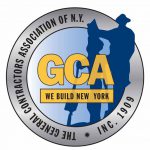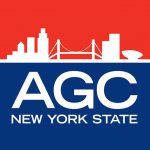First Department Affirms Lower Court Decision Granting Defendants’ Motion to Compel Unrestricted Authorizations Relating to Plaintiff’s Prior Accidents and Treatment
published on May 31, 2023
First Department Affirms Lower Court Decision Granting Defendants’ Motion to Compel Unrestricted Authorizations Relating to Plaintiff’s Prior Accidents and Treatment
published on May 31, 2023
In a decision dated May 20, 2023, the Appellate Division, First Department affirmed a lower court decision granting the motion of our clients J.T. Magen & Company Inc. Nordstrom, Inc. Broadway 57th/58th Retail Investor, LLC, 1790 Broadway Associates LLC and ULM I Holding Corp. to compel the plaintiff to provide certain discovery. The plaintiff, a union sheet metal worker, alleged that he injured multiple body parts at work when he was struck by falling ductwork. Through investigation, we learned that he had been involved in a prior workplace accident and a motor vehicle accident and had undergone multiple surgeries. We filed a motion to compel the plaintiff to provide unrestricted authorizations for the defendants to obtain records relating to his prior accidents and treatment. The First Department unanimously affirmed the lower Court’s Order granting our motion based on a finding that the plaintiff had affirmatively placed his prior accidents and treatment in issue by commencing this lawsuit. While the plaintiff did not claim to have reinjured any of the same body parts, he did make general allegations regarding claimed restrictions on certain activities of daily living. The First Department agreed that records pertaining to the prior accidents and treatment were discoverable as the defendants were entitled to explore whether the claimed restrictions and limitations could have been caused by any of the prior accidents or treatment.
Carlos Villanueva v. J.T. Magen & Company Inc. et al., 2023 WL 3696458, —N.Y.S.3d— (Sup. Ct. Kings Co., May 4, 2023)
Court Denies Summary Judgment to Plaintiff Laborer Who Removed Plywood Covering a Vent Shaft
published on May 18, 2023
Court Denies Summary Judgment to Plaintiff Laborer Who Removed Plywood Covering a Vent Shaft
published on May 18, 2023
In a decision dated May 4, 2023, the Hon. Delores J. Thomas of Kings County Supreme Court denied the plaintiff’s motion for summary judgment against our clients, New York City Transit Authority and Metropolitan Transportation Authority, on his causes of action alleging violations of Labor Law §§240(1) and 241(6). The plaintiff, a journeyman laborer, was employed by the general contractor on a project involving the installation of subway flood mitigation products in sidewalk vent grates above vent shafts. At the time of the incident, the opening above a vent shaft was covered with a three-foot long piece of plywood weighed down by two 80-pound grates. The incident, which was captured on surveillance video, occurred when the plaintiff entered the cordoned-off work area, bent down and lifted the plywood covering, stepped forward and fell into the vent shaft. The plaintiff, who knew that the plywood covered the vent shaft, contended that he removed the plywood covering because it appeared to be debris and a potential tripping hazard; his supervisor testified that there was no reason for the plaintiff to be working in this area. In opposition, the defendants argued that the plaintiff failed to satisfy his initial burden of establishing that Labor Law §240(1) applies, based on his testimony that fall protection equipment was available to him but he did not need to use it because no work was being performed on the sidewalk vent grates, and there are triable issues of fact whether the statute was violated because the plaintiff gave contradictory testimony as to whether tie-off points for a safety harness were available. The defendants argued that the plaintiff failed to satisfy his initial burden of establishing a violation of Labor Law §241(6) because none of the cited Industrial Code regulations [23 NYCRR §§ 23-1.7(b)(1) (“Falling hazards- Hazardous openings”), 23-1.16 (“Safety belts, harnesses, tail lines and lifelines”) and 23-5.1 (“General provisions for all scaffolds”)] applied and proximately caused his fall. The defendants also argued that the plaintiff was not acting within the scope of his employment at the time of this incident and that he was the sole proximate cause of his fall. The Court denied the plaintiff’s motion on the grounds that there are questions of fact whether the plaintiff needed safety equipment and whether he had access to it, as well as questions surrounding the plaintiff’s fault.
Mario Torres v. New York City Transit Authority, et al., Supreme Court, Kings County, Index No. 511099/2019 (Sup. Ct. Kings Co., May 4, 2023)
On April 18 and May 8, Stephen M. Cohen and Thomas J. Hall lectured at a seminar for Electra, U.S.A. entitled “Incident Management Best Practices” in New York City.
published on April 18, 2023
On April 18 and May 8, Stephen M. Cohen and Thomas J. Hall lectured at a seminar for Electra, U.S.A. entitled “Incident Management Best Practices” in New York City.
published on April 18, 2023
Second Department Affirms Lower Court’s Dismissal of Plaintiff’s Negligence Claim In Case Involving Plaintiff Motorcyclist Who Struck Construction Barrel On Expressway
published on April 15, 2023
Second Department Affirms Lower Court’s Dismissal of Plaintiff’s Negligence Claim In Case Involving Plaintiff Motorcyclist Who Struck Construction Barrel On Expressway
published on April 15, 2023
In a decision dated April 12, 2023, the Appellate Division, Second Department affirmed the Order of the Supreme Court, Kings County which granted our client CCA Civil-Halmar’s (“CCA”) motion for summary judgment dismissing the negligence action. At approximately 12:15 a.m., the plaintiff was operating a motorcycle traveling on the Cross Bronx Expressway in the Bronx when, approximately 200 to 300 feet past the end of a temporary lane closure, his front tire ran over a flattened construction barrel that was situated across the center and right lanes of the three-lane roadway, causing him to lose control of his vehicle and fall to the ground. CCA was a contractor on the New York State Department of Transportation’s (“NYSDOT”) project to rehabilitate a portion of the Cross Bronx Expressway.
The plaintiff alleged that CCA was negligent by failing to adhere to the contract plans and specifications for placement and maintenance of construction barrels for the temporary lane closure. The Second Department held that CCA satisfied its summary judgment burden by submitting evidentiary proof that, in performing its contracted work on the Project, its use of construction barrels complied with New York State Standard Specifications and the NYSDOT’s Work Zone Traffic Control Plan, and NYSDOT inspectors had approved the work. The Court held that plaintiff’s opposition failed to raise a triable issue of fact because there was no evidence that CCA’s use of construction barrels contravened the contract plans and specifications. The Second Department also held that the plaintiff failed to raise a triable issue of fact whether CCA launched a force or instrument of harm by failing to adhere to the contract plans and specifications and, therefore, CCA owed no duty to the plaintiff.
Elias Corniel, et al. v. CCA Civil-Halmar International, LLC, 215 A.D.3d 731, — N.Y.S3d— (2d Dep’t 2023)
Court Denies Summary Judgment to Plaintiff Motorist Who Struck Excavator While It Was Being Moved In Roadway
published on March 22, 2023
Court Denies Summary Judgment to Plaintiff Motorist Who Struck Excavator While It Was Being Moved In Roadway
published on March 22, 2023
In a decision dated March 13, 2023, the Hon. Ben R. Barbato of Bronx County Supreme Court denied the plaintiff’s motion for summary judgment on liability in a motor vehicle action. The plaintiff was the operator of a vehicle involved in a collision with an excavator owned by our client, Skanska/Walsh Joint Venture. The collision occurred at 4:00 a.m., after the plaintiff’s vehicle rounded a bend in the road and encountered the excavator making a turn into a driveway entrance at LaGuardia Airport from a designated left turn lane. The plaintiff contends that the excavator initiated the turn when her vehicle was one car length away and the right front passenger side of her vehicle impacted the right front passenger side of the excavator; the excavator operator, William Webster, did not observe the plaintiff’s vehicle at any time prior to the collision and, due to the size and weight of the excavator, he was not alerted to the collision when it occurred. The plaintiff argued that the excavator failed to yield the right-of-way and caused the collision by turning in front of her vehicle, in violation of Vehicle and Traffic Law §§1141 and 1163(a). In its opposition to plaintiff’s motion, Skanska challenged the plaintiff’s inconsistent testimony as to how the collision occurred. Skanska also submitted the affidavit of a motor vehicle accident reconstruction and traffic safety expert who concluded that the plaintiff’s account of how the collision occurred was physically impossible (e.g., the excavator would have exceeded its maximum acceleration rate to reach the point of impact) and the physical evidence supported the conclusion that the impact occurred when the front passenger side of the plaintiff’s vehicle struck the rear passenger side of the excavator in a glancing blow after the excavator had essentially completed its left turn. Judge Barbato held that the plaintiff failed to satisfy her initial summary judgment burden because her own testimony raised issues of fact as to the circumstances of this incident (e.g., she could not recall where the collision occurred in relation to the bend in the road, the speed limit or whether she had to slow her vehicle prior to the collision). The Court noted that, to the extent that the plaintiff alleged that the excavator had been stopped in the middle of the roadway when she first encountered it, there was an issue of fact whether she violated her duty of care to avoid the collision. The Court also admonished plaintiff’s counsel for repeatedly interrupting the plaintiff at her deposition in an attempt to rehabilitate the plaintiff’s comments or otherwise clarify the record.
Yorkina Torres-Martinez v. William Webster, et al., Index No. 20291/2021E (Sup. Ct. Bronx Co., Mar. 13, 2023)
On March 15, Thomas J. Hall lectured at a seminar for Travelers entitled “Evaluating and Defending Loss of Earnings Claims by Union Construction Workers” in New York, New York.
published on March 15, 2023
On March 15, Thomas J. Hall lectured at a seminar for Travelers entitled “Evaluating and Defending Loss of Earnings Claims by Union Construction Workers” in New York, New York.
published on March 15, 2023
Court Dismisses Plaintiff’s Labor Law §200 and Common-Law Negligence Claims as to Defendant Owner and Grants Owner Common-Law Indemnification Against Employer in Case Involving Plaintiff’s Fall from Scaffold
published on January 06, 2023
Court Dismisses Plaintiff’s Labor Law §200 and Common-Law Negligence Claims as to Defendant Owner and Grants Owner Common-Law Indemnification Against Employer in Case Involving Plaintiff’s Fall from Scaffold
published on January 06, 2023
In a decision dated January 6, 2023, the Hon. Mojgan C. Lancman of Queens County Supreme Court granted the motion of our client, defendant/property owner, Waterfront Resort, Inc., for summary judgment dismissing plaintiff’s causes of action pursuant to Labor Law §200 and for common-law negligence. The Court also granted Waterfront’s motion for summary judgment on its third-party claim for common-law indemnification against plaintiff’s employer, Wing Jay Construction, Inc. The plaintiff, while employed by Wing Jay on a project involving the demolition of an existing warehouse and the construction of a residential condominium complex at 109-09 15th Avenue, Queens, New York, allegedly fell from a scaffold and sustained a traumatic brain injury. Regarding the §200 and common-law negligence causes of action, the Court determined that the plaintiff’s accident did not result from any allegedly dangerous or defective condition at the subject premises, but rather, the means and method of the work. Additionally, it was also undisputed that Waterfront had exercised no supervisory control over the manner in which the plaintiff’s work was performed. Regarding the third-party claim for common-law indemnification, the Court found that Waterfront was entitled to indemnification from Wing Jay because Waterfront established that it was not negligent and its liability was purely statutory and vicarious.
Yun Quan Gao et al. v. Waterfront Resort, Inc. et al., Index No. 707824/2018 (Sup. Ct. Queens Co., Jan. 6, 2023)
First Department Reverses Lower Court and Dismisses Plaintiff’s Labor Law §241(6) Claim In Case Involving Worker Who Struck Neck On Overhead Object
published on December 07, 2022
First Department Reverses Lower Court and Dismisses Plaintiff’s Labor Law §241(6) Claim In Case Involving Worker Who Struck Neck On Overhead Object
published on December 07, 2022
In a decision dated December 6, 2022, the Appellate Division reversed the Order of the Supreme Court, New York County denying summary judgment on the plaintiff’s Labor Law §241(6) claim predicated upon a violation of 12 NYCRR §23-1.7(e)(1) (“sharp projections [in passageways] which could cut or puncture any person shall be removed or covered”) and, upon searching the record, dismissed the Labor Law §241(6) claim against our client, Consolidated Edison Company of New York, Inc. (“ConEd”), which contracted for the work on the premises.
The plaintiff, a mechanic investigating a reported gas leak at a residential apartment building, was allegedly injured when he exited the boiler room in the basement and as he ascended the topmost of three exterior steps, he struck his neck on a plywood board installed overhead in the doorway to the basement vestibule. The premises owner had previously installed the plywood board in the top portion of the doorway to conceal the basement opening from the street level after the pipes in the boiler room had been stolen. In support of its summary judgment motion seeking dismissal of the Labor Law §241(6) claim and in opposition to the plaintiff’s summary judgment motion, ConEd submitted an affidavit from its construction site safety expert who inspected the plywood board and opined that the Industrial Code did not apply and was not violated because the plywood board was not “sharp”; he substantiated his opinion with a photograph of the edge of the board. The First Department held that the plywood board was not a sharp projection that could cut or puncture and thus, the Industrial Code provision was inapplicable.
Michael Widdecombe v. Consolidated Edison Company of New York, Inc., 211 A.D.3d 450, 180 N.Y.S.3d 95 (1st Dep’t 2022)
On November 9, Stephen M. Cohen and Thomas J. Hall lectured at a seminar for Alliant entitled “Best Practices for Post-Accident Investigation” in Uniondale, New York.
published on November 14, 2022
On November 9, Stephen M. Cohen and Thomas J. Hall lectured at a seminar for Alliant entitled “Best Practices for Post-Accident Investigation” in Uniondale, New York.
published on November 14, 2022
Court Dismisses Plaintiff’s Labor Law §240(1) Claims as to All Defendants in Trip and Fall Accident on a Permanent Staircase at a Construction Site
published on October 31, 2022
Court Dismisses Plaintiff’s Labor Law §240(1) Claims as to All Defendants in Trip and Fall Accident on a Permanent Staircase at a Construction Site
published on October 31, 2022
In a decision dated October 14, 2022, the Hon. Ingrid Joseph of Kings County Supreme Court granted the motion and cross-motion brought by defendants, Update Systems Electrical Contracting Corp. and Liberty Elevator Corporation a/k/a Liberty Elevator of NY, respectively, which sought dismissal of plaintiff’s cause of action pursuant to Labor Law §240(1) as a matter of law because he tripped and fell on a permanent staircase. Our clients, Archstone Builders LLC and Deco Towers Associates, LLC, submitted an affirmation in support of the motions and sought dismissal of the plaintiff’s §240(1) claim as to all defendants. In reaching its decision, the Court held that “[t]he allegations in the complaint assert[ed] a normal usual and ordinary danger[] of construction outside the scope of the protections provided by Labor Law 240.” Additionally, “a permanent staircase is not a safety device defined by Labor Law 240.” In light of the foregoing, the Court dismissed plaintiff’s cause of action pursuant to Labor Law §240(1) as to all defendants as a matter of law.
Dario Xavier Rojas Rivera v. Archstone Builders LLC et al., Index No. 533141/2021 (Sup. Ct. Kings Co., Oct. 14, 2022)








